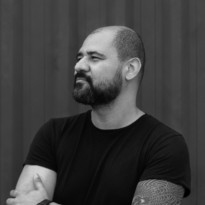What is design ‘doing’? How will it produce the revenue streams of the future?
First let’s look at the concept of design doing and how it fits into the design process. Design thinking is a methodology that has thinking and doing embedded into its process. The thinking component creates an imaginative and playful approach to testing ideas, until the best one is applied to solving a problem. All the intersections between people, markets and technology are explored and then the doing begins. The best solution is prototyped and tested to create what will ultimately become a new product or service.
Design ‘doing’ is where all of the dreaming and creations of the ‘thinking’ process become pragmatic and useful. The true mastery of design lies in the execution. Coming up with ideas is not a challenge for most practitioners. It is the ongoing iterations that makes the difference. It is the dedication to the craft and the drive to keep moving when obstacles arise that transforms a design project into something exceptional. And a good designer into a great one!
This ensures a new prototype, process or service has the continued support it needs to create impact in the world. This is where a designer sees all of their hard work transform into results, statics and most importantly new revenue streams.
Designing New Revue Requires New Skill Sets
Design lead processes awaken different skill sets within teams as they apply the methodologies to their work. In order to create exceptional designs that deliver financial results we must look at the skills needed to become an exceptional designer. Design thinking taps into our ability to use empathy, radical collaboration and experimentation. Once we start moving towards a solution it awakens new attributes of self-awareness, resilience and being results oriented.
Leadership for future fit organisations is not the same as traditional management skills. A leader who embraces design, values self-awareness. It is a core muscle that an individual must build to become a leader. They must first be able to identify where they themselves might be resistant to change so they can identify it in their team. This is important so they can learn the skills to motivate teams when they are resisting pivots in the road ahead. It is common to face frustrations when a team moves from abstract thinking into doing and building. Coming up with ideas is easy, making them work long term is not.
All projects face limitations, such as skills gaps, technology deficits or financial constraints. This is where design facilitates resilience in a team. It is only through practical implementation of managing ongoing projects that we find our way around roadblocks. To be successful it is important to be strong and move forward no matter what.
The final key component of great design is results. Whether the project is a business challenge or a social mission it is critical to produce statistics to prove its impact. Qualitative data shows how the ongoing management of the solution is creating value. This could be anything from positive customer feedback to an increase in revenue. Metrics, data and numbers must be quantified to portray what the project is ‘doing’ in the world.
Designing The Future
We are living at a time of critical change, standing in the gap between how we did things in the past to how they will be in the future. We are experimenting with remote working, new models of income generation, digital technology and different social relationships. They are the prelude of what is coming. Moving forward the future will be significantly different from the past. It is time to start shifting our expectations for the future. It is time to start building something new. Never before have creatives had such a big opportunity to reimagine the business.
We must become the engineers of the new realities that are starting to emerge. The values of self-awareness, resilience and results instilled in producing exceptional design are necessary to bring this emerging world into being.
How To Start ‘Doing’
Fundamentally to succeed with any project it is important to imbed expectations and accountability into it. This is not about creating checklists or micromanaging results. Design led project management must be constant and fluid. It is built layer by layer and victory over victory. Rather than thinking in terms of a project with a beginning, middle and an end, it becomes an ongoing quest. Design management focuses on creating a new mission that becomes embedded in a business and influences its way of operating.
Incorporating design thinking into the ‘doing’ of project management creates a more innovative and resilient business. It is a management process motivated by creativity and moved by experimentation. The results will open up avenues to new earnings.
Move step by step. Create estimates based on results to justify investments. This will provide a fertile field to grow the benefits of good design results for your organisation.
Contact us to learn more about how to insert design skills in your projects. There has never been a better time to develop a new product for the world that is emerging.
—
Follow us on social
Instagram – Facebook – LinkedIn – Youtube – Spotify
How Can We Help?
- For training and Innovation Journeys in your company: check out our in-house course offering.
- For upcoming courses in your region: visit our website.
- For upcoming events in your region: look at our event calendar.
- If you have a special project and would like to use Echos’ consultancy services: send us an email.
- Want to speak to a real person? Call us on 1300 502 006


